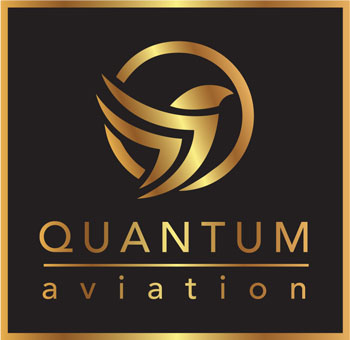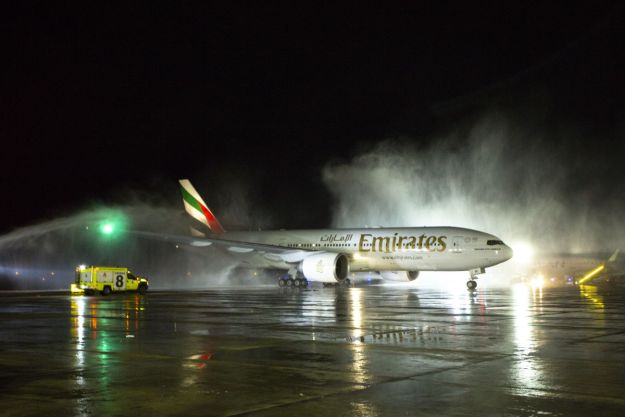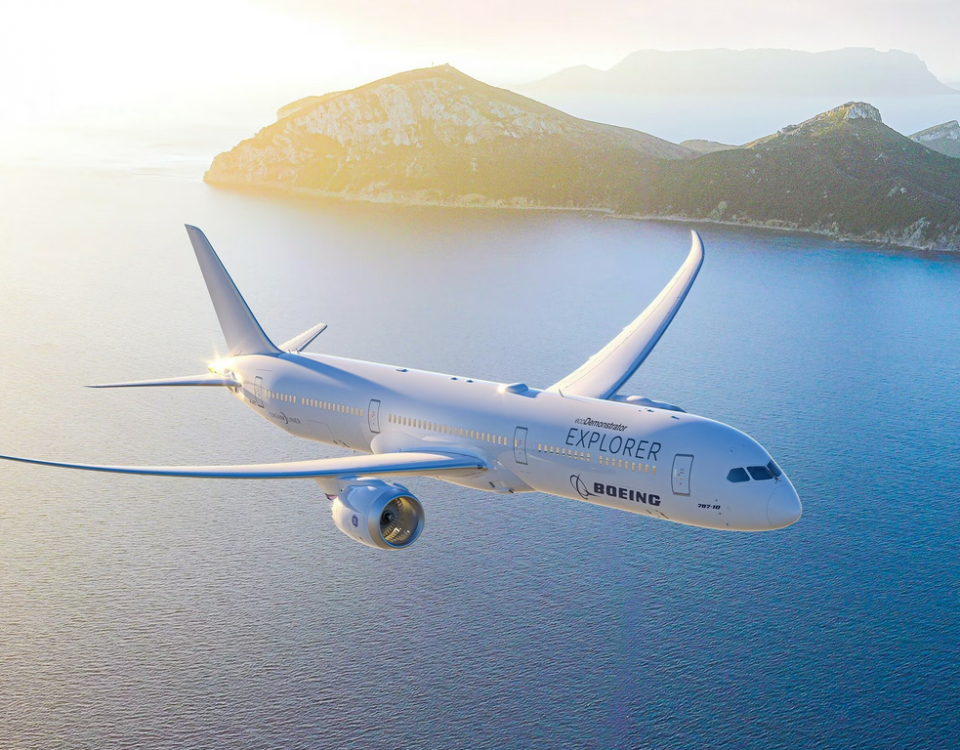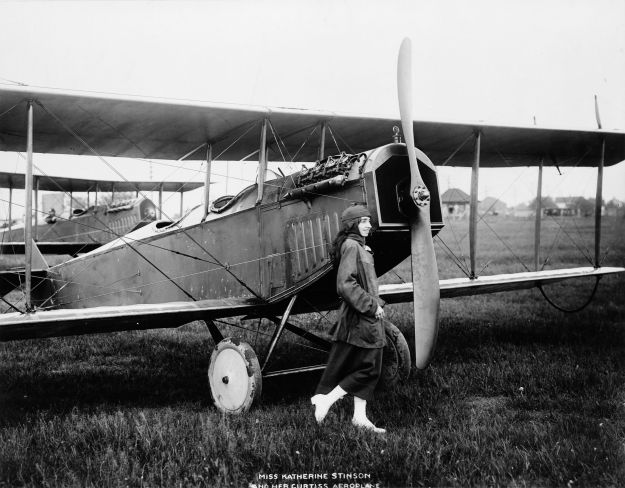
WestJet to commemorate Western Canada’s inaugural air mail flight
July 7, 2018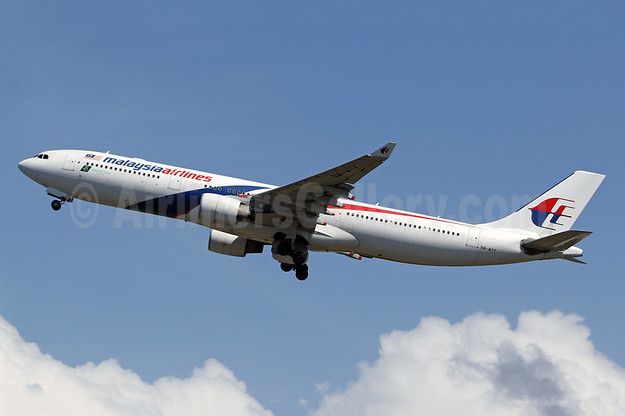
Malaysia Airlines reports its financial progress in the first quarter
July 9, 2018Emirates on July 6, 2018 launched a new, five times-a-week service from Dubai (DXB) to Santiago International Airport (SCL), via the Brazilian city of Sao Paulo (GRU), marking the airline’s first arrival in Chile.
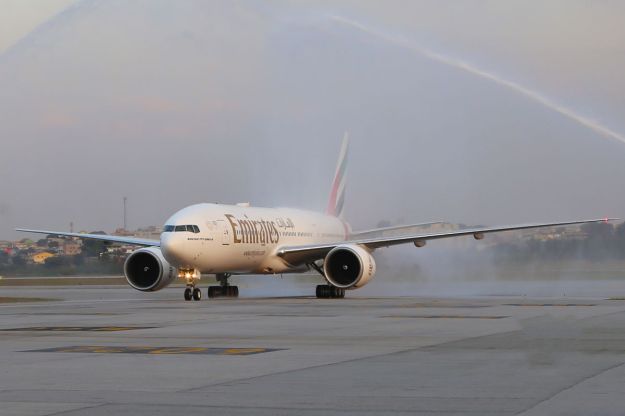
On board the inaugural Boeing 777-200LR flight, which was welcomed at both Sao Paulo (above) and Santiago airports with a water cannon salute (above), was a group of special guests and media.
Emirates’ newly refurbished Boeing 777-200LR to operate the new route
The aircraft deployed on the route is Emirates’ newly refurbished two-class Boeing 777-200LR which offers 38 Business Class seats in a 2-2-2 layout, and 264 seats in Economy Class. While the Business Class seats are in the same design and shape of Emirates’ latest lie-flat seats, they are now two inches wider for a more comfortable journey. The seats retain the champagne coloured finish and diamond stitch pattern on a full leather cover, and the ergonomically designed headrest revealed on Emirates’ newest Boeing 777 Business Class seats in November.
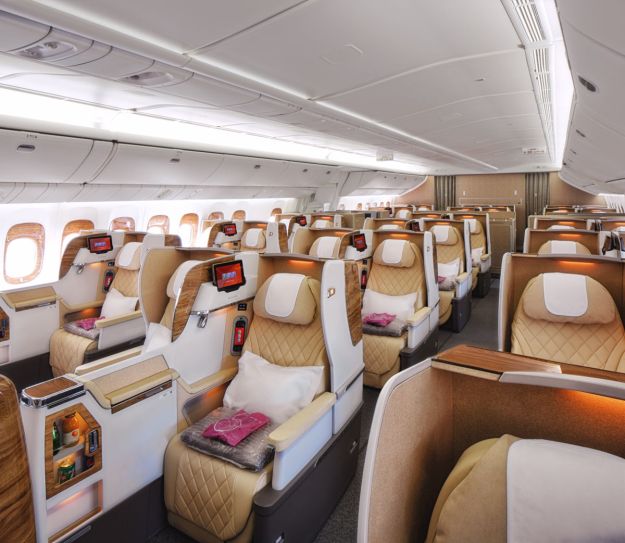
In addition, the new Business Class cabin features a social area – unique to the Boeing 777-200LR fleet. The mini lounge area features snacks such as crisps, sandwiches and fruit, as well as beverages for customers to help themselves to during the flight. Economy Class seats onboard the 777-200LR have also been refreshed to the latest colour palette of soft greys and blues. The ergonomically designed seats come with full leather headrests that have flexible side panels and can also be adjusted vertically for optimum support. Customers can enjoy up to 3,500 channels of on-demand entertainment on ice with 600 movies, over 200 hours of TV, and thousands of music tracks every month. The aircraft is also equipped with Wi-Fi and Live TV across all classes. Business Class passengers also benefit from a complimentary chauffeur drive service in Dubai, Santiago and other select destinations as well as access to Emirates’ global network of airport lounges.
Flight details and connections to Emirates’ global network of over 160 destinations
Flight EK263 will depart Dubai on Tuesdays, Thursdays, Fridays, Saturdays and Sundays at 09:05hrs local time, arriving in Sao Paulo at 17:00, before departing again at 18:30 and arriving into Santiago at 21:40 on the same day. The return flight EK264 will depart Santiago on Mondays, Wednesdays, Fridays, Saturdays and Sundays at 01:10 local time, arriving in Sao Paulo at 05:55. EK264 will depart once again from Sao Paulo at 07:45 bound for Dubai where it will arrive at 05:15 the next day, connecting to flights to many of the points beyond on the extensive Emirates and flydubai partnership network.
Timings of the new service are scheduled to provide seamless connections to many Asian and Middle East routes, via a convenient stopover in Dubai. Passengers travelling from Sao Paulo can benefit from a morning departure in Sao Paulo and morning arrival in Dubai, making connecting to new destinations in Southeast Asia, China, Turkey, Egypt, Middle East, Africa and Europe convenient.
The new service will see Emirates fly an additional five times a week to Sao Paulo, complementing the airline’s existing daily A380 flight between Dubai and Sao Paulo. In total, Emirates will now fly 12 times a week to Sao Paulo. Emirates’ Santiago flight will be a linked service with Sao Paulo, meaning that customers in South America can now travel between the two cities in unprecedented style and comfort. Citizens from both Brazil and Chile only need ID cards to travel to either country.
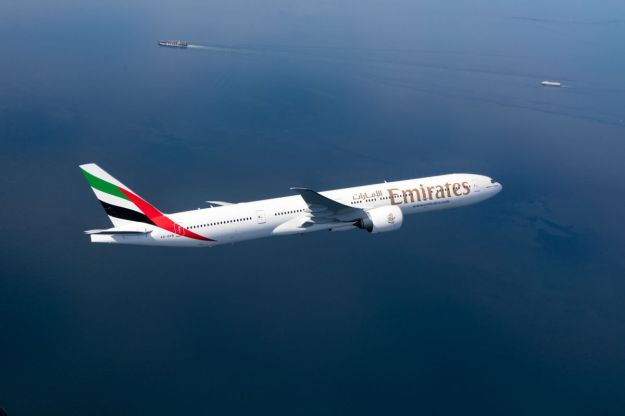
In other news, Emirates will be operating extra flights to Jeddah and Medina to help facilitate travel for pilgrims heading to and from the Kingdom of Saudi Arabia for Hajj.
Emirates will be operating 33 additional flights to Jeddah and Medina from 6 to 31 August to support the journey for pilgrims expected to travel to the Holy City of Mecca during Hajj this year. These services will run in parallel with Emirates’ regularly scheduled services to Jeddah and Medina. These additional flight services are available to travellers holding a valid Hajj visa. This year, top inbound destinations Emirates is expecting Hajj pilgrims to come from are Pakistan, Senegal, the United States, the UK, Australia, Indonesia, the Ivory Coast and Nigeria.
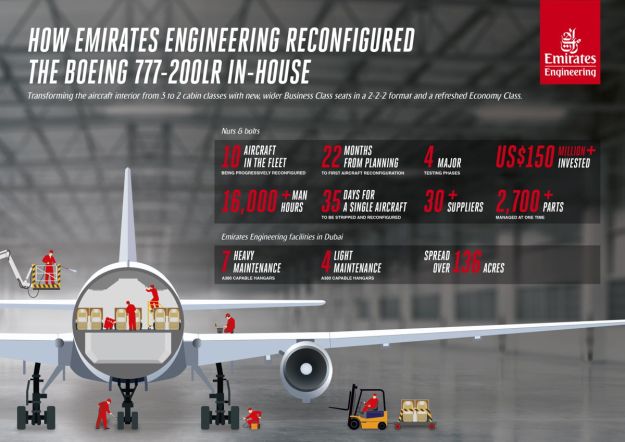
Finally, Emirates Engineering has successfully completed the reconfiguration of the second Boeing 777-200LR aircraft in its fleet. The conversion of the aircraft from three to two cabin classes was executed fully in-house at the Emirates Engineering hangars in Dubai. The reconfigured aircraft also features new, wider Business class seats in a 2-2-2 format, a new social area in business class, as well as a fully refreshed Economy class providing customers a superior inflight experience.
Video:
The first reconfigured Emirates Boeing 777-200LR aircraft took to the skies in early March 2018. The eight remaining Boeing 777-200LR aircraft in Emirates’ fleet will be progressively reconfigured by mid-2019 and deployed to a number of other cities on the airline’s global network including Santiago, Chile- Emirates’ latest destination in South America. Emirates has invested over US$150 million to reconfigure the Boeing 777-200LR aircraft in its fleet.
Working with internal stakeholders as well as external suppliers, it only took Emirates Engineering 22 months from the time the decision was made to reconfigure the airline’s Boeing 777-200LR fleet to the first reconfigured aircraft rolling out of the hangars ready for its first commercial flight.
Emirates Engineering undertook a complex process to ensure that the job was completed successfully and on time. This included detailed work to outline specifications, review designs and layout, manage procurement and contracts with suppliers, secure regulatory approvals, maintain a stock of raw materials, and the management of workflows, timelines and resources in the run up to grounding the aircraft and converting the interiors.
Design and workflow
Finalising the design was core to the reconfiguration process and the layout of the cabin that was finally chosen was one of eight proposed blueprints. The engineering team also had to secure approvals from regulatory authorities including the GCAA and the FAA in order to modify the aircraft from its original design.
Once the design was finalised Emirates Engineering worked with suppliers to ensure that all the necessary parts and spares were available to complete the reconfiguration of the aircraft. In total, the team had to work with over 30 suppliers and had to manage more than 2,700 parts and spares at any one point of time. Key suppliers such as Boeing, Jamco, Panasonic, Rockwell Collins, Zodiac, and ATG were present on-site to provide assistance.
Grounding the aircraft
The next step in the process was to ground the aircraft for cabin reconfiguration. During this time the original interiors of the aircraft cabin were completely stripped and rebuilt. The reconfiguration not only involved the installation of new seats but also a number of other changes including new wiring for the lighting systems, raising the ceiling height in the business class cabin, and modifying the aircraft galleys to incorporate the new social space in business class.
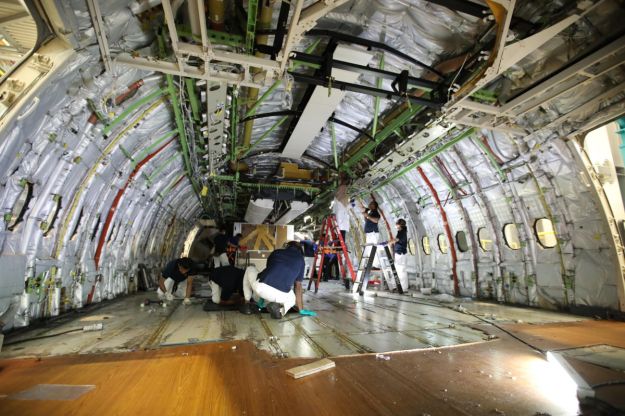
It took Emirates Engineering 55 days of ground time to reconfigure the first aircraft. However, as a result of the learnings and efficiencies achieved during the first conversion, the reconfiguration of the second aircraft was completed in just 35 days.
Safety Testing
A battery of tests had to be conducted on the aircraft at various stages to ensure its safe operations. The four major types that had to be conducted included: prototype testing where the design was validated for regulatory compliance; functional testing of cabin components; EMI Electro-magnetic interference (EMI) and air-flow testing inside the cabin, and a five hour test flight with the simulation of various flight scenarios and in-flight fire and smoke testing.
Overall, the Emirates Engineering team invested the equivalent of over 16,000 collective man hours in the design and implementation of this aircraft reconfiguration project.
Emirates Engineering operates modern and extensive technical facilities in Dubai to maintain its fleet of over 260 aircraft. Spread over 136 acres, the support infrastructure includes seven heavy maintenance hangars and four light maintenance hangars, all of which are capable of servicing the Airbus A380, the world’s largest passenger jet. Leveraging on its experience as the world’s largest operator of the Airbus A380 and the Boeing 777 aircraft, Emirates Engineering provides Maintenance, Repair and Overhaul (MRO) services selectively to external parties.
All photos by Emirates.

